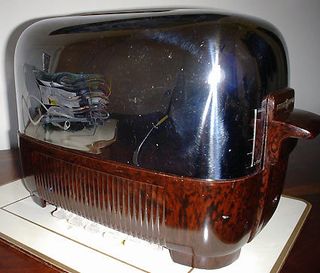RAID on Rye
Getting Started
THG: So how should one get started? Is it as simple as thinking about where to place each of the components and sticking to that plan? In practice, how do you do it?
Dave Goeke: I recommend making cardboard cutouts of the fragile components, including the motherboard, drives, and power supply. Use the cutouts to determine where and how these pieces will fit inside the toaster. It is normal to repeatedly assemble and disassemble much of the unit to test and see how things will fit, especially when designing a custom mounting bracket or fitting an interface into a tight space. It is easy to damage exposed circuitry and chips. Using cardboard cutouts instead of the real things will prevent damage to vital components.
The Finer Points Of Selecting A Toaster
THG: Would you give any recommendation regarding the toaster?
Dave Goeke: The toaster is critical. The right one is hard to find...
THG: ... this sounds as hard as finding your perfect match!
Dave Goeke: Yeah, in some way it certainly is. The toaster must be large enough, sturdy, and have interior tabs that components can be screwed onto. And coming back to your analogy it must be attractive as well! Old, over-built, retro GE toasters are typically the best, and you are not gonna hear me commenting on this one!
THG: Fair enough. So what does make for a good toaster?
Stay on the Cutting Edge
Join the experts who read Tom's Hardware for the inside track on enthusiast PC tech news — and have for over 25 years. We'll send breaking news and in-depth reviews of CPUs, GPUs, AI, maker hardware and more straight to your inbox.
Dave Goeke: There are some features that I consider very important.
- The bottom part of the toaster must be strong enough to support about 7 pounds. Many toasters are made of thin, flimsy sheet metal and light plastic, which does not offer the opportunity to drill holes, attach mounting brackets, or support all the weight.
- The silver and brown General Electric toaster has the requisite dimensions. The base is of sturdy attractive plastic, with interior tabs and holes. The tabs allow the attachment of rigid mounting brackets that support the drives. Nearly all the other components are screwed to the drives.My silver and black toaster has a frame on the bottom that attaches to the cover with four screws. While most toasters typically have a thin and flimsy under-plate, this frame was strong enough to support the weight.
- Adequate room and clearance for all the parts and pieces. Squeezing a two-drive system into a standard two-pieces-of-bread toaster is problematic. Most two-slice toasters are just a bit too small.
- A toaster cover or enclosure that can be removed from the base in such a way as to expose most of the interior during assembly.
- Good looks. One reason for building a Toaster RAID is to make something attractive, interesting to look at, and amusing. The brown and white retro GE toaster is especially stylish and attractive.
I'm not sure why, but all the structurally and cosmetically suitable toasters I've found and actually used to make a Toaster RAID are made by General Electric.

This old toaster was a lucky Salvation Army find. It is big enough, the plastic base is thick and sturdy, the base has interior tabs, there is good clearance underneath and it is attractive.
Dave Goeke: Finding a good toaster is never easy. Most of what is available is too flimsy, too small, too ugly, or lacking internal tabs to attach aluminum rails to. Older is better, so search where old toasters are likely found; good sources are thrift stores, garage sales, rummage sales, estate sales, grandma's attic, and the like.
Current page: Getting Started
Prev Page About The Rails Next Page Run The Disassembled Toaster Parts Through The Dish WasherMost Popular

